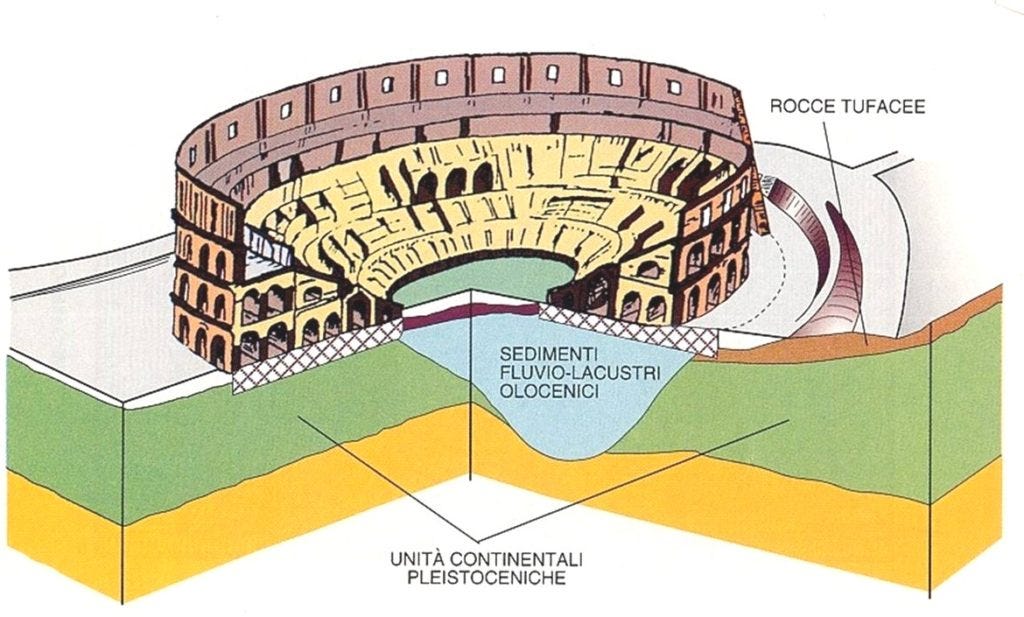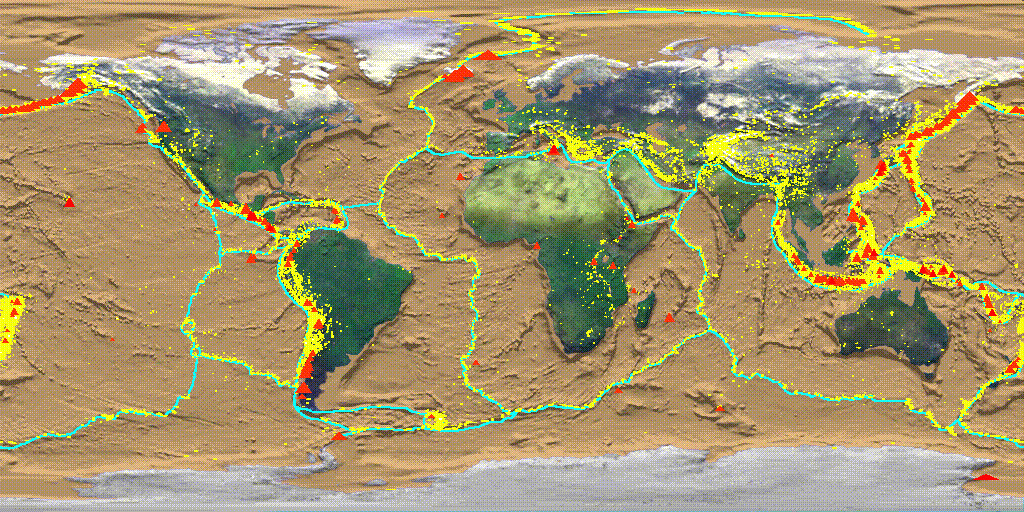Rome has been hit by earthquakes in the past. There is also evidence on monuments, starting from the Colosseum, as well as evidence of the period. On a general level, I wouldn’t worry much about the “if”. Italy is a seismic zone, nothing much can be done about it. And earthquakes are a natural, inevitable phenomenon. I became a geologist with a thesis on geological structures in the immediate vicinity of Rome. The idea of our supervisor started from morphological features (linear “engravings” visible from satellite imagery – there was no Google Earth to help us) that in the north-south direction seemed to affect the area of Italy’s capital. The question was: do they correspond to seismogenetic structures, i.e. capable of generating earthquakes? So we looked for traces of similar faults on the field… and found them.
The vertical faults in a north-south direction are well known in the central Apennines. They date back to well before the formation of the mountain range; they were initially formed during the extension of the ocean basin on which the sediments that make up the Apennines were deposited. Afterwards, they moved while being reused during the compression that made those deposits emerge as mountains. The point was to find traces of more recent movements.

The mountains to the northeast of Rome, were islets along the coast of the ancient Tyrrhenian Sea. The sea covered all that today we call the Roman countryside. Retreating, the sea left sandy and clayey deposits on the calcareous substratum of marine sediments deformed and stacked to build the mountains of this area (the same deposits that are exposed in the islands, now hills, north-east of Rome). While this was happening, extension processes of the rocky substratum also occurred, which normally accompany the compression that lifts the mountains. This extension opened fractures to the west of the mountain range from which magma rose, triggering a volcanic activity whose deposits covered the marine ones as the sea withdrew. The late phase of volcanism is called “hydrothermal”: the eruptions have ended, but the underground waters are still warmed by the heat that the rocks have accumulated during the volcanic activity. For this reason the area of Rome is rich in thermal baths and in the north-east of the city there are voluminous deposits of travertine (lapis tiburtinum in Latin) used for constructions since the times of the ancient Romans. Travertine is a rock that is formed from calcareous deposits left by thermal water on the vegetation (which decomposing leaves the characteristic irregularly shaped voids). Travertine is the most recent deposit in the area. We found traces of oblique faulting on travertine as well as on the volcanic deposits immediately underlying it. This is a sign that the area has been tectonically (=seismically) active even in the recent geological past.

Earthquakes are a natural phenomenon. Thousands of them happen all over the planet every day. They tend to concentrate along the margins of the plates into which the planet’s lithosphere is divided. The plates move relative to each other. Earthquakes are an expression of this movement. The boundary between two plates is certainly not smooth and slippery, two adjacent plates do not “flow freely” next to each other. The roughness of the rocks along the boundary of the plates prevents them from sliding smoothly. But that doesn’t stop them: the energy accumulates until at a certain point a small area of the boundary between the plates is suddenly unblocked, generating an earthquake. Then, in geological time, another area of the same fault line will be affected. After millennia, the result may become visible even on a large scale as a relative displacement of the two plates. Today GPS detectors continuously measure the movements of the plates and maps of their relative movements are available. In a somewhat coarse way we can say that Italy is on the edge of the two African and European plates. It is normal that the two plates move one relative to the other. No geologist is surprised that every now and then there is an earthquake that everyone can clearly perceive. Even when the earthquake is devastating, it is no wonder. It’s perfectly normal for that to happen. It’s not news for Geology: it is how the lithosphere of our planet works. At the margins of the plate, there are earthquakes: perfectly natural. What’s amazing is that in the 21st century, the people who are supposed to provide earthquake-proof buildings that can withstand earthquakes of the magnitude expected in a certain area have not yet understood this.
Traveling by car is dangerous. People die every day because of car accidents. But that’s how it is if we want/have to keep using cars. Modern cars have several measures to limit the risk of accidents or the hazards in case of an accident, first of all safety belts and air-bags. The Italian peninsula is almost entirely made up of mountains. Remember? Mountains are formed by compression along plate margins. Plate margins are the areas of the lithosphere where earthquakes occur. Is there anything else we need in order to understand this? And yet we keep going around with the air-bags off and without fastening our seatbelts (perhaps without respecting the speed limits and the safety distance). Sooner or later something is going to happen. Let’s stop being surprised…


